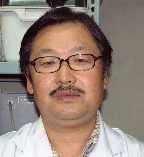Saturday 20, November, 2004, 09:30-18:30, (16:00-17:00, Q&A) No.3 CR
Sunday 21, November, 2004, 09:30-12:30, No.3 CR
Poster Sessions
 |
Shigeharu Nakachi
Environmental Monitoring Laboratory (EML), Toxic Watch Network (T-Watch), Japan
ABSTRACT
The great Hanshin-Awaji Earthquake, which occurred on January 17, 1995, affected about 3 million people, of whom 6,433 were killed. In addition, more than 260,000 houses or buildings were reportedly damaged. Å@About 124,000 houses collapsed and then were demolished. There were about 1500 reinforced concrete buildings unavailable after the disaster. Of which at least 100 buildings may have contained sprayed asbestos.
Immediately after the earthquake, a huge amount of dust released from the damaged and demolished buildings raised keen concern about the survivors' health. As the water supply was restored, the local government authorities encouraged the personnel involved in demolition works to spray water around the site during the work. The works, however, were often done in a sloppy way and failed to prevent the hazardous material contaminating the area. Indeed, in February 1995, up to as many as 250 asbestos fibers per liter were observed when a building containing sprayed crocidolite (blue asbestos which had been already prohibited then) was being demolished.
In the devastated area, some volunteers established The Network for Improving the Measures to Counter Asbestos in the Earthquake-damaged Area (Hanshin ASNET) together with concerned researchers to address the problem, and started its campaign. They opened a hotline service and started patrol around the area to find buildings with asbestos sprayed on the walls and ceilings. Once such buildings were found, the group asked the local governments and demolition companies to take necessary measures. Their environmental activities helped reduce the release of asbestos in the damaged area. This report describes the experiences at the disaster and their lessons.